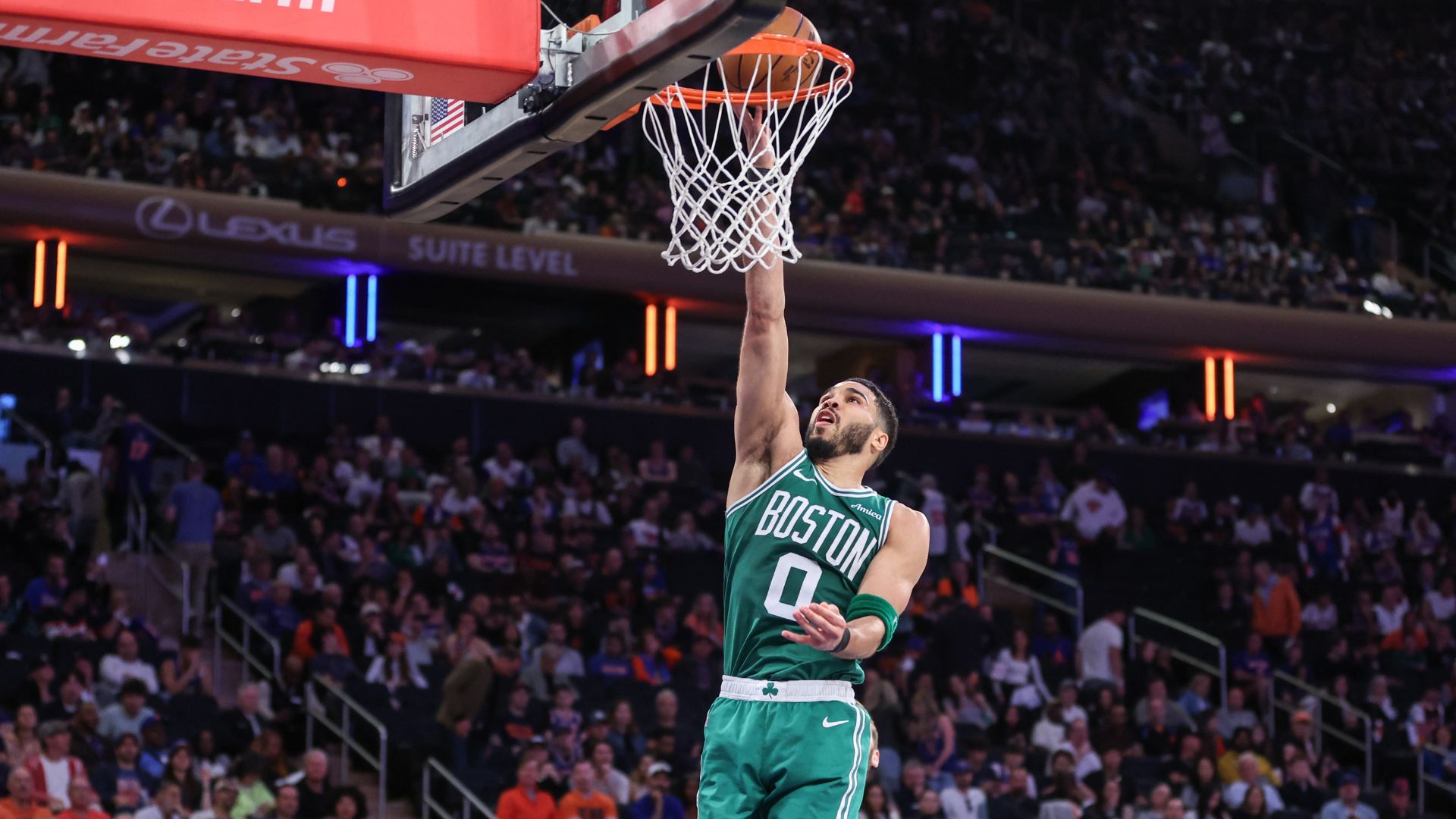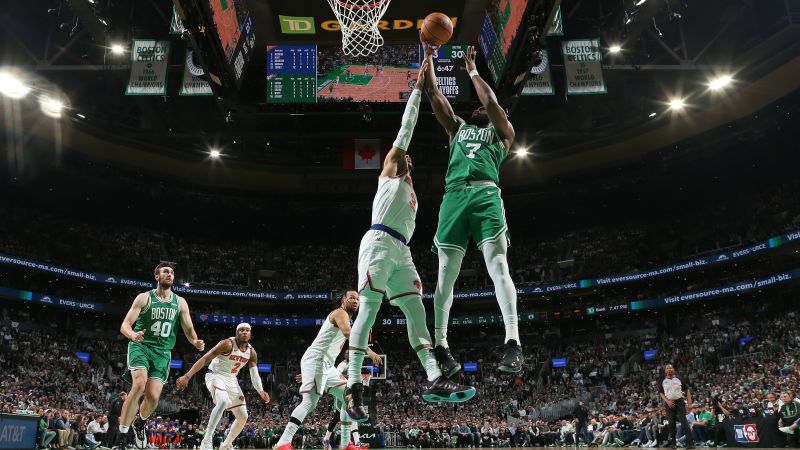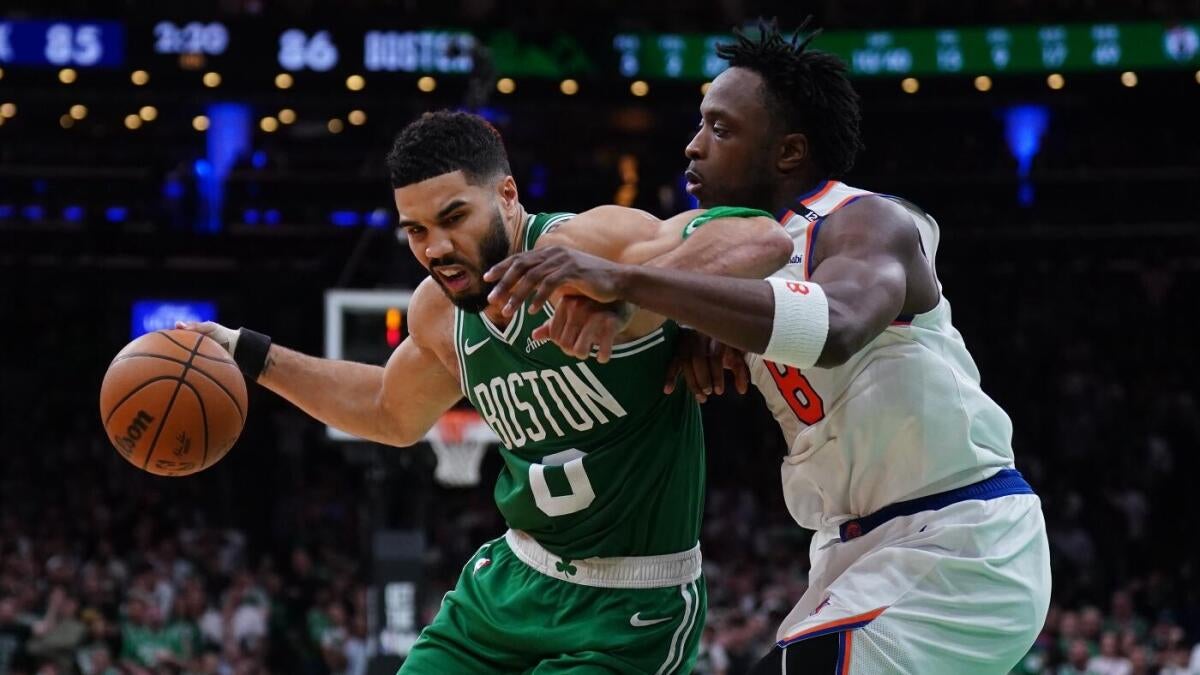
The Celtics confirmed the worst for Jayson Tatum on Tuesday, so it’s natural for Boston fans to try to figure out what it means for his career.
Tatum underwent successful surgery to repair a ruptured right Achilles tendon. The 27-year-old suffered the injury late in the fourth quarter of Monday’s Game 4 loss to the New York Knicks at Madison Square Garden.
There was no timetable for a return within the update. However, the injury history suggests a 10-month recovery period, meaning Tatum would miss the entire 2025-26 season. There would be hope for a return during the 2026 postseason, but there is no precedent.
The one example brought up for Tatum’s situation is Kevin Durant. The two-time champion suffered an Achilles injury in the 2019 NBA Finals, and after missing one season, he maintained his production as an All-NBA star. The key for Tatum is that Durant’s workload was heavily managed. That is a reality Tatum will have to get used to.
But what about other NBA players? Multiple studies tell different stories about how well athletes perform after an Achilles injury, but it’s important to take those examples into context.
Story continues below advertisement
Kobe Bryant and Chauncey Billups came to mind. The All-Stars suffered their Achilles injuries after turning 34 years old. Their careers certainly could have lasted longer — they played a combined five more seasons before retiring — but it’s more likely they were on their way out of the league.
The same could be said for DeMarcus Cousins and Anderson Varejao. The big men’s injuries did them no favors. However, their play styles would have ended their NBA careers sooner than they would have wanted, with the 3-point revolution taking over the league when they returned from their respective Achilles injuries.
Rudy Gay and Wes Matthews might be cautionary tales for Tatum. Matthews remarkably came back from his Achilles injury in seven months. Gay also came back sooner than expected. The only other player to do that was J.J. Barea, but he was already near the end of his career. Matthews was under 30 and an above-average role player and Gay was a fringe All-Star-caliber player. However, that quick recovery time might have hurt their ability to regain the explosiveness that they had and limited their career ceilings.
Brandon Jennings might be an outlier who could muddle some studies. He suffered his Achilles injury at 26 years old. While tragic, he already was on his way out of the league after failing to live up to a standout rookie season with the Milwaukee Bucks. He certainly could have turned things around. However, his play style didn’t fit the trends of the league during the mid-2010s.
Story continues below advertisement
more celtics
What’s clear about the trends of Achilles injuries is the loss of explosiveness. That’s what hurt Elton Brand’s career and what made Dominique Wilkins a different player in the mid-1990s. It’s probably not a career-shortening injury, as those who did have their careers shortened were more due to the developing trends of the NBA.
However, Celtics fans shouldn’t be surprised if Tatum’s career looks different after his Achilles injury. He might have to play fewer games and fewer minutes. He might have to rely more on his jump shot. Whether or not he can still lead Boston to another championship will depend on what the roster looks like when he returns.


